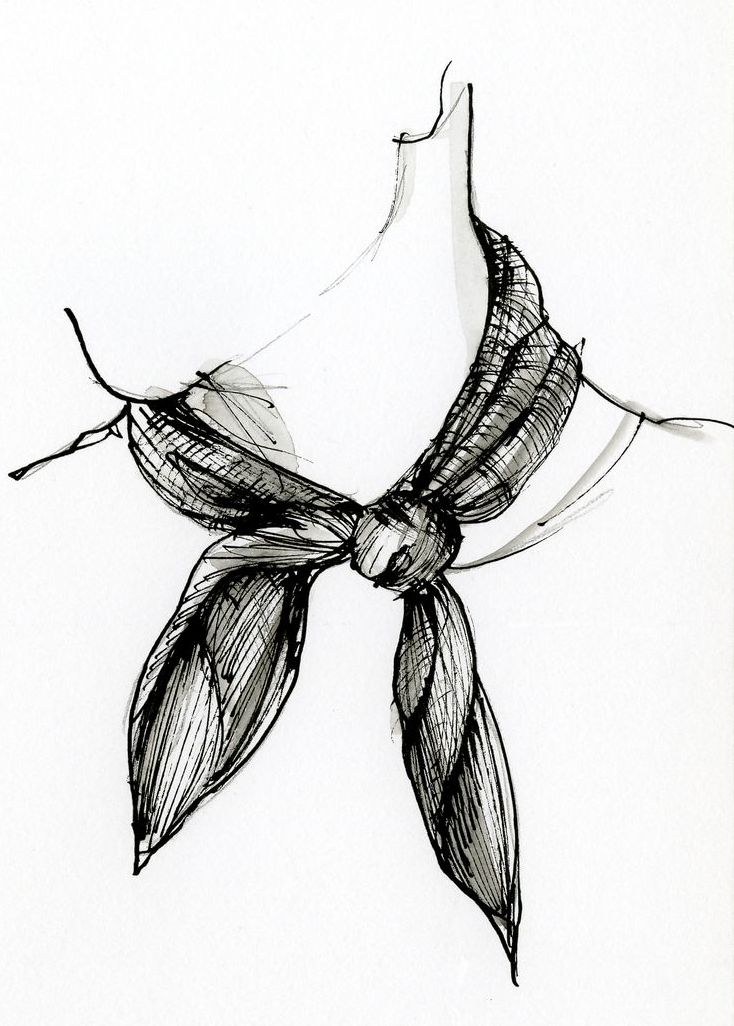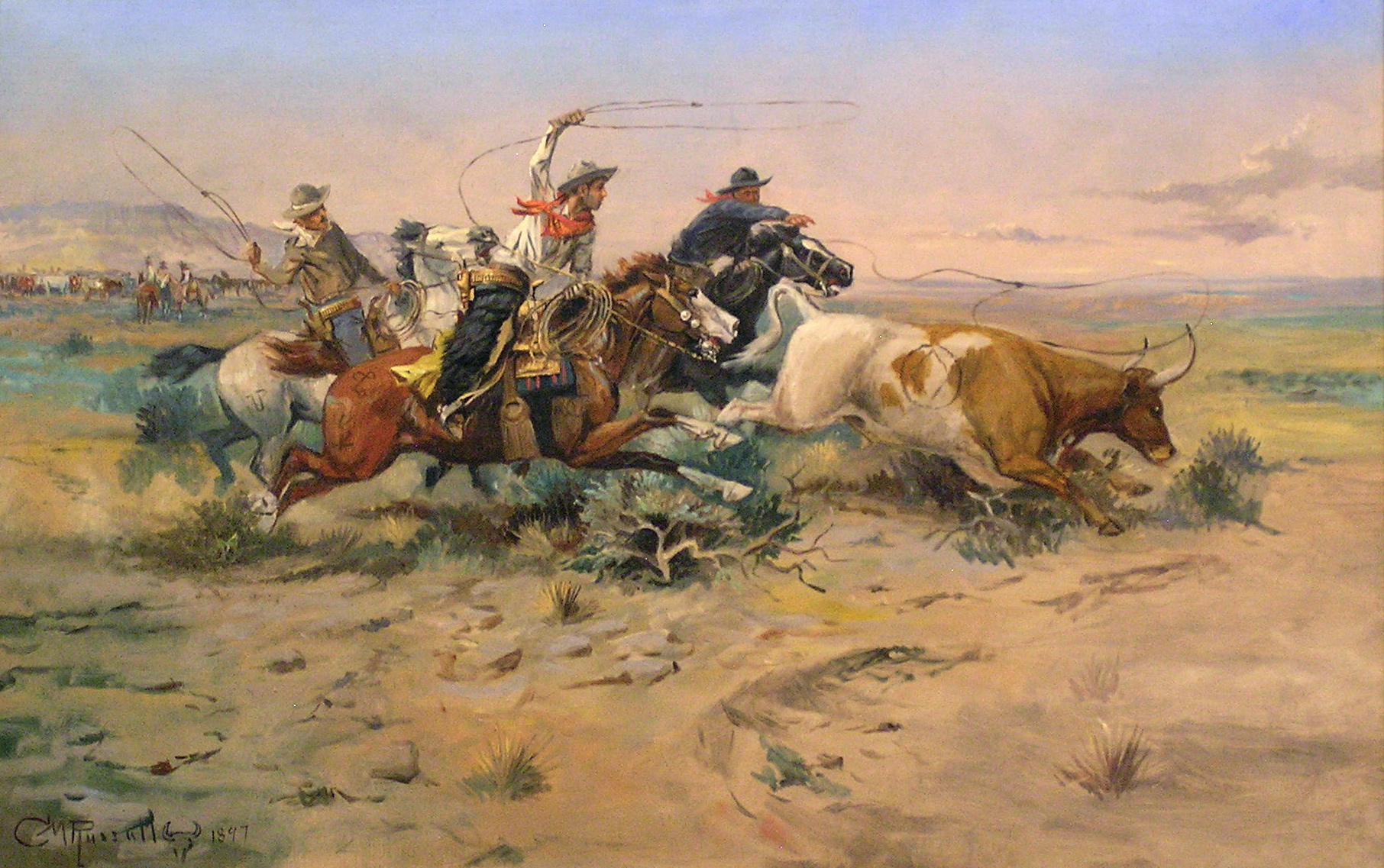|
Neckerchief
A neckerchief (from ''neck'' (n.) + ''kerchief''), also kerchief, scarf, and bandana, is a type of neckwear associated with those working or living outdoors, including farm labourers, cowboys and sailors. It is most commonly still seen today in the Scouts, Girl Guides and other similar youth movements. A neckerchief consists of a triangular piece of cloth or a rectangular piece folded into a triangle. The long edge is rolled towards the point, leaving a portion unrolled. The neckerchief is then fastened around the neck with the ends either tied or clasped with a slide or woggle. History Terracotta Army The figures of the Terracotta Army, dating from the 3rd century BCE, are notable for prominently featuring neckerchiefs, as each of the approximately 7,500 statues is depicted wearing one. This detail is particularly unusual, as no comparable artistic or sculptural evidence of neck cloths appears in Chinese or other world cultures for many centuries thereafter. Contemporary Chi ... [...More Info...] [...Related Items...] OR: [Wikipedia] [Google] [Baidu] |
Woggle
A woggle (or ''neckerchief slide'') is a device to fasten the neckerchief, or scarf, worn as part of the Scout or Girl Guides uniform, originated by a Scout in the 1920s. In form and function, a woggle is similar to the Tie ring, a formal piece of jewelry used to secure the bulk of a Necktie or an Ascot tie, popularized in the 1800s. Name origin One story relating to the origin of the word 'woggle' is that it was named to rhyme with the word ''boon doggle'' used in America. However the term woggle pre-dates the first known reference to this in 1925. There are a few other references to the word woggle before its adoption by the Scout movement. It is thought that woggle was a verb, with similar meanings to waggle and wobble, in the 16th century. It was in limited use as a noun around 1900. Another report is that William 'Bill' Shankley, while working at Gilwell Park with Scouting's founder, prior to 1922, called it a woggle, 'a name given to something without a name'. Earl ... [...More Info...] [...Related Items...] OR: [Wikipedia] [Google] [Baidu] |
Neckwear
Neckwear is a category of clothing that is worn around or on the neck. Neckwear can be Utilitarian design, utilitarian in nature, usually to protect the neck from colder temperatures, or can be worn as a "fashion statement." Neckwear is distinguishable from a necklace, which is defined as Jewellery, jewelry. Types of neckwear Neckerchief A neckerchief (from ''neck'' (n.) + ''kerchief''), sometimes called a necker, kerchief or scarf, is a type of neckwear associated with those working or living outdoors, including Farmer, farm labourers, cowboys and sailors. It is most commonly still seen today in the Scouts, Girl Guides and other similar youth movements. A neckerchief consists of a triangular piece of cloth or a rectangular piece folded into a triangle. The long edge is rolled towards the point, leaving a portion unrolled. The neckerchief is then fastened around the neck with the ends either tied or clasped with a slide or woggle. Scarf A scarf (pl.: scarves or scarfs) ... [...More Info...] [...Related Items...] OR: [Wikipedia] [Google] [Baidu] |
Frederick Russell Burnham
Major (rank), Major Frederick Russell Burnham Distinguished Service Order, DSO (May 11, 1861 – September 1, 1947) was an American scout and world-traveling adventurer. He is known for his service to the British South Africa Company and to the British Army in colonial Africa, and for teaching Scoutcraft, woodcraft to Robert Baden-Powell, 1st Baron Baden-Powell, Robert Baden-Powell in Rhodesia (region), Rhodesia. Burnham helped inspire the founding of the international Scouting, Scouting Movement. Burnham was born on a Dakota people, Dakota Sioux Indian reservation in Minnesota, in the small village of Tivoli near the city of Mankato; there he learned the ways of Native Americans in the United States, American Indians as a boy. By the age of 14, he was supporting himself in California, while also learning scouting from some of the last of the cowboys and frontiersmen of the American Southwest. Burnham had little formal education, never finishing high school. After moving to t ... [...More Info...] [...Related Items...] OR: [Wikipedia] [Google] [Baidu] |
Scarf
A scarf (: scarves or scarfs) is a long piece of fabric that is worn on or around the neck, shoulders, or head. A scarf is used for warmth, sun protection, cleanliness, fashion, religious reasons, or to show support for a sports club or team. Scarves can be made from materials including wool, linen, silk, and cotton. It is a common type of neckwear and a perennial accessory. History Antiquity and the Middle Ages Scarves have been worn since ancient history. In 1350 BC, in Ancient Egypt, Queen Nefertiti is said to have worn a tightly woven headscarf, and a 9th-century BC statue of Ashurnasirpal II depicts the emperor wearing a shawl. In 500 BC in Athens, women wore scarves to enhance their seductive charm; in the same period, Indian women wore them flirtatiously as headgear. During the reign of the Chinese Emperor Cheng, from 259 to 210 BC, scarves were used as military markers to identify the rank of Chinese warriors or their status as officers; many of the Terracotta ... [...More Info...] [...Related Items...] OR: [Wikipedia] [Google] [Baidu] |
Cowboy
A cowboy is an animal herder who tends cattle on ranches in North America, traditionally on horseback, and often performs a multitude of other ranch-related tasks. The historic American cowboy of the late 19th century arose from the ''vaquero'' traditions of northern Mexico and became a figure of special significance and legend.Malone, J., p. 1. A subtype, called a Wrangler (profession), wrangler, specifically tends the horses used to work cattle. In addition to ranch work, some cowboys work for or participate in rodeos. Cowgirls, first defined as such in the late 19th century, had a less-well documented historical role, but in the modern world work at identical tasks and have obtained considerable respect for their achievements. Cattle handlers in many other parts of the world, particularly South America and Australia, perform work similar to the cowboy. The cowboy has deep historic roots tracing back to Spain and the earliest European Settlement of the Americas, settlers of th ... [...More Info...] [...Related Items...] OR: [Wikipedia] [Google] [Baidu] |
Scout Movement
Scouting or the Scout Movement is a youth movement which became popularly established in the first decade of the twentieth century. It follows the Scout method of informal education with an emphasis on practical outdoor activities, including camping, woodcraft, aquatics, hiking, backpacking and sports. A widely recognized movement characteristic is the Scout uniform, by intent hiding all differences of social standing and encouraging equality, with neckerchief (known as a scarf in some countries) and (originally) a campaign hat or comparable headwear. Distinctive insignia include the fleur-de-lis as well as merit badges or patches. In some countries, Girl Guides organizations, using a trefoil insignia, exist for girls to carry-out scout training. Other programs for children who are too young to be Scouts and take the Scout Promise, such as Wolf Cubs or Cubs (launched in 1916), and for those who are too old to be Scouts, such as Rovers (launched in 1918), are sometim ... [...More Info...] [...Related Items...] OR: [Wikipedia] [Google] [Baidu] |
Scouts
Scouting or the Scout Movement is a youth social movement, movement which became popularly established in the first decade of the twentieth century. It follows the Scout method of informal education with an emphasis on practical outdoor activities, including camping, woodcraft, aquatics, hiking, Backpacking (wilderness), backpacking and sports. A widely recognized movement characteristic is the Scout uniform, by intent Social hierarchies, hiding all differences of social standing and encouraging Social equality, equality, with neckerchief (known as a scarf in some countries) and (originally) a campaign hat or comparable Headgear, headwear. Distinctive insignia include the World Scout Emblem, fleur-de-lis as well as Scout badge, merit badges or patches. In some countries, Girl Guides organizations, using a trefoil insignia, exist for girls to carry-out scout training. Other programs for children who are too young to be Scouts and take the Scout Promise, such as Wolf Cubs or Cub ... [...More Info...] [...Related Items...] OR: [Wikipedia] [Google] [Baidu] |
Kerchief
A kerchief (from the Old French ''couvre-chef'', "cover head"), also known as a bandana or bandanna, is a triangular or square piece of cloth tied around the Human head, head, face, or neck for protective or decorative purposes. The popularity of ''head kerchiefs'' may vary by culture or religion, often being used as a Christian headcovering by men and women of the Anabaptist, Eastern Orthodox, and Plymouth Brethren denominations, as well as by some Orthodox Jewish and Muslim men and women and is also considered a hat. The ''neckerchief'' and ''handkerchief'' are related items. Types Bandana A bandana or bandanna (from Hindi and Urdu, ultimately from Sanskrit बन्धन or bandhana, "a bond") is a type of large, usually colourful kerchief, originating from the Indian subcontinent, often worn on the head or around the neck of a person. Bandanas are frequently printed in a paisley pattern and are most often used to hold hair back, either as a fashionable head accessory or fo ... [...More Info...] [...Related Items...] OR: [Wikipedia] [Google] [Baidu] |
Robert Baden-Powell
Lieutenant-General Robert Stephenson Smyth Baden-Powell, 1st Baron Baden-Powell, ( ; 22 February 1857 – 8 January 1941) was a British Army officer, writer, founder of The Boy Scouts Association and its first Chief Scout, and founder, with his sister Agnes, of The Girl Guides Association. Baden-Powell wrote '' Scouting for Boys'', which with his previous books, such as his 1884 ''Reconnaissance and Scouting'' and his 1899 ''Aids to Scouting for N.-C.Os and Men'', which was intended for the military, and ''The Scout'' magazine helped the rapid growth of the Scout Movement. Educated at Charterhouse School, Baden-Powell served in the British Army from 1876 until 1910 in India and Africa. In 1899, during the Second Boer War in South Africa, Baden-Powell defended the town in the Siege of Mafeking. His books, written for military reconnaissance and scout training, were also read by boys and used by teachers and youth organisations. In August 1907, he held an experimental camp, ... [...More Info...] [...Related Items...] OR: [Wikipedia] [Google] [Baidu] |
Kerchief
A kerchief (from the Old French ''couvre-chef'', "cover head"), also known as a bandana or bandanna, is a triangular or square piece of cloth tied around the Human head, head, face, or neck for protective or decorative purposes. The popularity of ''head kerchiefs'' may vary by culture or religion, often being used as a Christian headcovering by men and women of the Anabaptist, Eastern Orthodox, and Plymouth Brethren denominations, as well as by some Orthodox Jewish and Muslim men and women and is also considered a hat. The ''neckerchief'' and ''handkerchief'' are related items. Types Bandana A bandana or bandanna (from Hindi and Urdu, ultimately from Sanskrit बन्धन or bandhana, "a bond") is a type of large, usually colourful kerchief, originating from the Indian subcontinent, often worn on the head or around the neck of a person. Bandanas are frequently printed in a paisley pattern and are most often used to hold hair back, either as a fashionable head accessory or fo ... [...More Info...] [...Related Items...] OR: [Wikipedia] [Google] [Baidu] |







